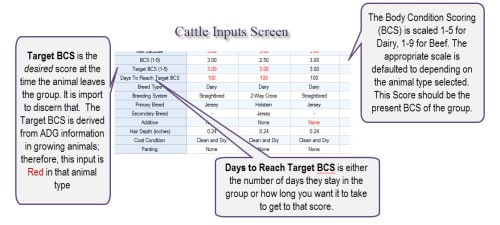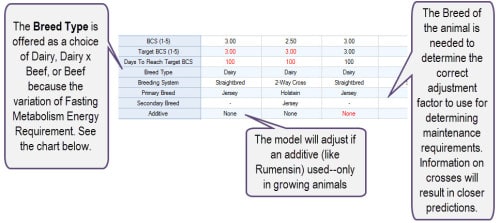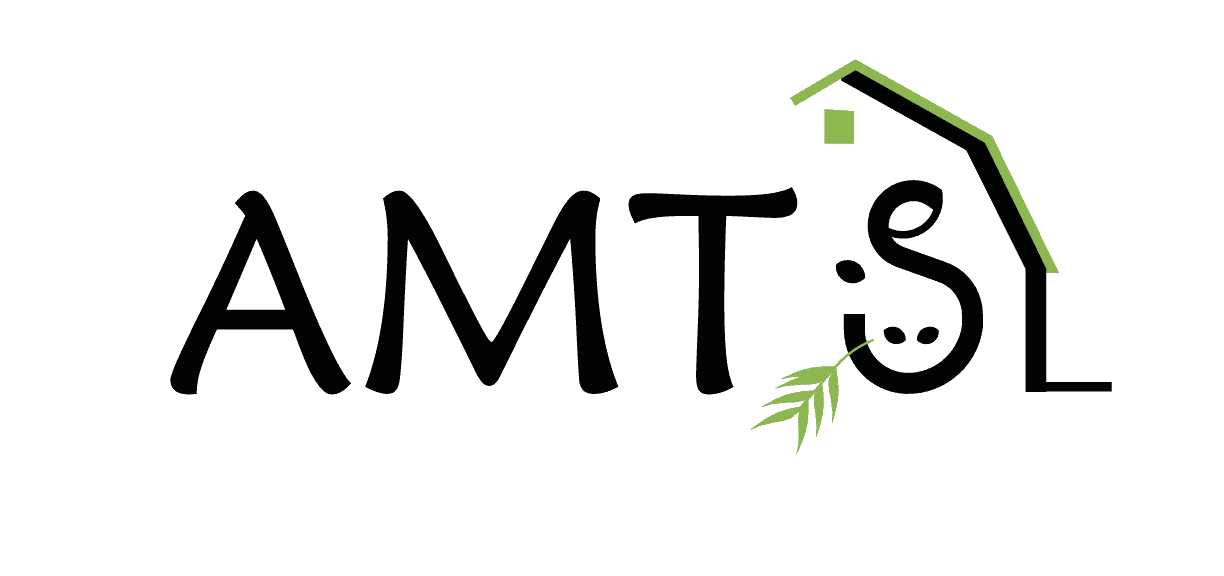
The next group of inputs we will work on in the Cattle screen are Body Condition Score and how BCS and target BCS can be used to target gains in growth and milk production. The following inputs provide the model with information that allows for correct coefficient for model equations. Finally the last group of inputs we will address today focus on cattle physical features as they relate to environmental stresses.

BCS –Body Condition Score is used by the model to assist in predicting partitioning of energy and protein reserves. In the model, as tissue reserves are mobilized or replenished, the tissue is split between fat (energy) and protein, resulting in less energy available or required per change in condition score. If the target BCS is lower than the current BCS, ME and MP is added to the supply. If the target BCS is greater than the current BCS, ME, MP, and AA requirements are added. In other words, If you have a fresh cow at 3.0 BCS and you want it to peak and hold a desirable production level, do not set the Target BCS at 2.5 (even though fresh cows often milk off condition and may very well end up at 2.5). If you do that, the model will decrease the requirements for maintaining reserves and you will be feeding to lose weight if you follow the model. The model will predict based on your inputs. It is not the model’s fault if your cows lose weight (and production) if you have set it up to do so!


The multipliers used to calculate maintenance are much more variable in beef breeds than dairy due, in part, to the differences in breed milk production and milk components. For this reason the input of breed type will result in closer predictions.
Our final posting on Cattle screen inputs will cover the effects of environmental factors, pertaining to cold and heat stress, and weight measures as well as ADG.
